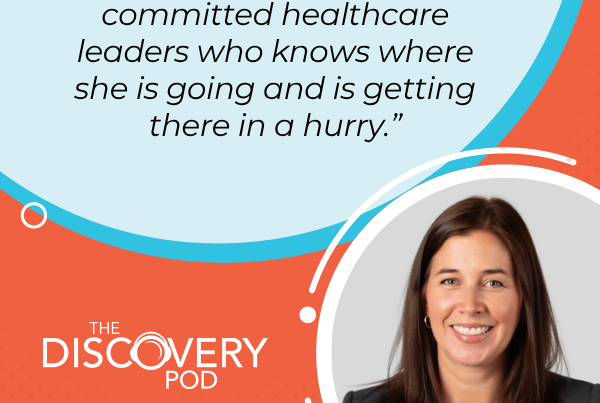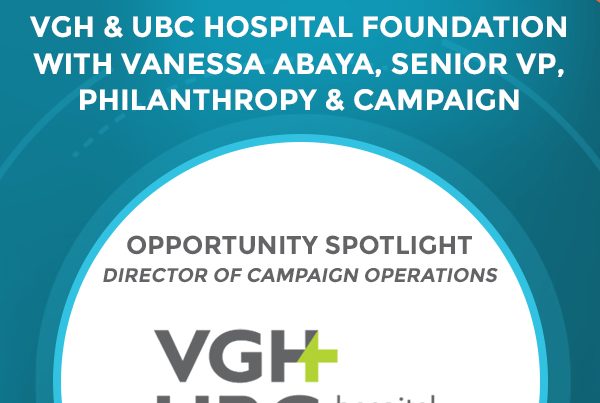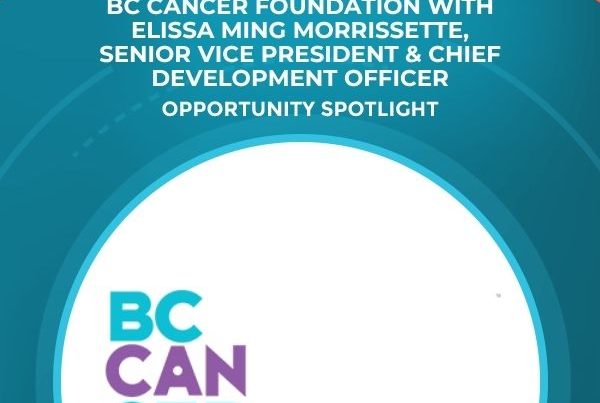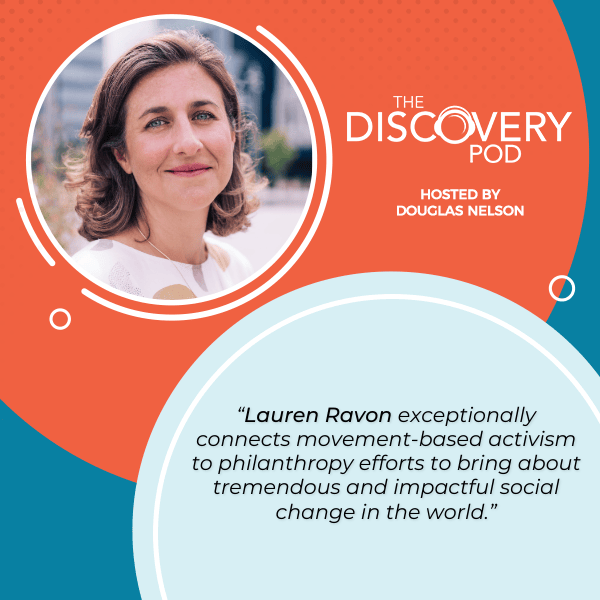
By bringing different local programs together, they become much more efficient and impactful in addressing today’s biggest social issues. Douglas Nelson continues to put the spotlight on women leaders in Canada this Women’s History Month as he sits down with Lauren Ravon, executive director of Oxfam Canada. She shares how small donations combined with long-term community development allow their organization to create philanthropic and humanitarian efforts that span across the globe. Lauren also details how their grassroots partnerships, feminist identity, and diverse team shape their unique approach in raising alarm on the world’s most critical issues. This conversation is truly an eye-opener on how tiny efforts, when collaborated and connected the right way, can create huge waves of social change.
—
Listen to the podcast here
Connecting Local Programs To Global Policy With Lauren Ravon, Executive Director, Oxfam Canada
In honor of Women’s History Month, we’re shining a spotlight on leaders who are redefining what leadership looks like here in Canada. Our guest is Lauren Ravon, Executive Director of Oxfam Canada. Lauren brings a powerful perspective on global justice, feminist leadership, and the importance of centering women in humanitarian and development work. She is a committed feminist and social justice advocate with two decades of experience in international development. Since joining Oxfam Canada in 2011, she has held key leadership roles and worked relentlessly to center women’s rights and gender justice across the global Oxfam network.
In this episode, she talks about the power of small donations, of movement and community philanthropy, of telling a bigger story, shining the light of justice across the world to an audience that doesn’t always want to see what that light reveals, and the power of community, the power of storytelling to change the way our world is working. Lauren is a powerful communicator. Her story is incredible. The lessons of leadership in this episode are something that no one should want to miss. Thank you for tuning in. Enjoy this exceptional episode with Lauren Ravon.
—
Welcome to The Discovery Pod, Lauren.
Thanks for having me on.
Lauren Ravon Of Oxfam Canada
I’m looking forward to our conversation. Oxfam Canada is an organization that most people in Canada feel like they have a good idea of what it is. In getting ready for our conversation, I was impressed with the scope, the scale, and the depth of the work that you and your colleagues undertake on a regular basis here in Canada and around the world. For our audience who are looking for a bigger understanding of Oxfam Canada, tell us a little bit about that organization and who you serve.
Thanks for your interest in the organization. I’ve been with Oxfam for several years now. It’s an organization that is so close to my heart. I am very happy to have the opportunity to speak about our work. Oxfam’s mission in a nutshell is to end the injustice of poverty. We are looking at all the causes of poverty and how we can work to change that, both in Canada and around the world. I often say what makes Oxfam quite a unique organization is that we do three things that others do, but rarely all together.
We support long-term community development work in communities from Zimbabwe to Bolivia. That could be supporting local women’s rights organizations, small economic development opportunities, and food security initiatives. We have long-term community development work with partners in those communities. We also mount large-scale humanitarian response operations when disaster strikes, in response to a flood, an earthquake, a civil war, or a mass displacement crisis. We’re a humanitarian organization that responds by providing water, sanitation, and hygiene support in those moments of terrible crises for people.
We also do advocacy and campaign work to speak truth to power, to call out the power imbalances that are driving these humanitarian emergencies and keeping people trapped in poverty. We are looking way beyond the Band-Aid solution, trying to address the root causes. We are putting forward proposals around laws, systems, and economic models. We are tackling the big picture causes of poverty and injustice on issues around climate change, women’s rights, economic inequality, and tax justice.
Those three things other organizations do. Some organizations are advocacy organizations. Some organizations just do humanitarian responses. Some organizations work at the community level on long-term development. We do all three. It makes us a complicated organization, but it is also very well-suited to this time in history. In every community where we work around the world, we’re doing long-term development work, but there’s a high likelihood that there’s going to be a humanitarian emergency sometime in any given year. We’re seeing more climate emergencies and more displacement. No surprise to you. We’re hearing that there’s more and more conflict and armed violence.
Being able to work in communities and then very quickly provide a humanitarian response when the worst happens to those communities is powerful. It also means that, unlike many humanitarian organizations, we’re still there many years after the crisis has happened. We’re still there to rebuild in the long term. It provides that continuity. We’re there before the storm and long after the storm, metaphorically speaking. Our policy work allows us to connect the dots.
For example, in a community, we might be working with farmers to have climate-adapted farming practices so that they can make a living and provide for their families. We’re also connecting the dots with the big picture causes of climate change. We are calling out the richest polluters on this planet to pay their fair share of taxes, to invest in climate adaptation. We work on pushing the wealthiest countries in the world, including Canada, to reduce their greenhouse gas emissions because we’re seeing the ripple effects in the communities where we work.
When you think of Oxfam, it’s that complicated web of issues that we work on, from the very local, working with people, to the high-level policy and advocacy work that we do with elected officials, parliamentarians, the United Nations, and everything in between. It’s an organization that’s focused on ending poverty, but very much taking a systems approach. It makes our work more complicated to explain, but the world that we’re in is complicated. Anyone who is offering up a simple solution is probably delusional or misguided. There are no simple solutions to the complexities that we’re dealing with today.
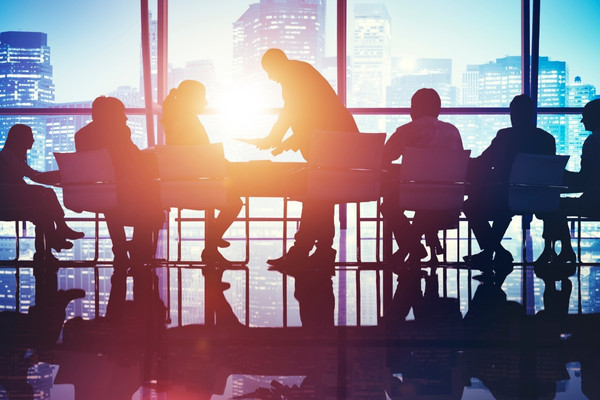
Local Programs: Oxfam Canada is an organization focused on ending poverty through a systems approach.
Putting Women At The Centerpiece Of The Mission
There certainly aren’t. As things get more complicated and more complex, the desire for people to see a simple solution and grab at it makes it worse rather than better. The angels of our better nature that teach us that if it appears complicated, it’s worth investigating because it probably is, need to be held out and held up. When I think of Oxfam and the great work that you and your colleagues do, I like the idea of before the storm, during the storm, and after as a way of thinking about the work. There’s also an important emphasis that you put on the rights of women as a centerpiece for development, mitigation of damage, reconstruction, and the great work that you do. Can you talk a little bit about how that is so important or how that shows up on a day-to-day basis at Oxfam?
I’m glad you brought that up. To add to the complexity and the nuance of our organization, we’re a proudly feminist organization that focuses on working in ways that not only promote women’s rights and advance gender equality. It does so in a way that upholds people’s voices and focuses on participation, inclusion in decision-making, and empowerment. Our feminism shows up in the issues we work on. For example, anything from gender-based violence to women’s reproductive health, to pay equity, but also in the ways we work, in how we partner with people, and how our own staffing and organizational dynamics play out.
Our feminist identity is part and parcel of everything we do. To give you an example, we will prioritize working with women’s rights organizations whenever possible in both our long-term development work but also in humanitarian response. For those who know the humanitarian sector, it’s long been called the sector of the boys in shorts. You’re imagining expats who are showing up, rushing in, and rushing out.
We try to have a very different approach. Most of our humanitarian response is with local communities, with local partners. We make a big effort to focus in particular on bringing women’s rights organizations into the response because they often know their communities best. They’re often the first to respond, way before the international community gets organized. Women’s self-help groups and women’s rights networks often are the first to respond. We focus on working with them.
On the other side, when I am talking about our policy, advocacy, and campaign work, we bring a very strong gender analysis to the proposals that we put forward. If we’re putting forward proposals on climate adaptation or on food security, we’ll bring a gender lens to that work to make sure that the solutions are not only not making things worse, but are designed to reach a dual objective. For example, mitigating climate change, adapting to the realities of climate disasters, but also lifting women and advancing women’s rights in the process, because development work and humanitarian response can be transformative.
In times of crisis, gender roles are often changed and women can take on new responsibilities, be recognized for their strengths, or it can entrench existing inequalities. For example, we see the rise of child marriage in many conflict zones because that’s what families resort to to survive. We are trying to always take a gender lens and look at how we can use this moment to shift gender norms for the better and advance women’s rights.
In times of crisis, gender roles are often changed. Women can take on new responsibilities, be recognized for their strengths, and entrench existing inequalities. Share on XThat’s important. The concept of transformation is not neutral. It is not always positive. Having feminism as a guiding light and a focus on women’s rights adds a spotlight down the road to keep you focused on as you’re moving your work forward. There are so many questions I want to ask you. I want to go in three different directions here. I’m going to pick. I’m going to go left.
Finding Balance Between Local And Global Efforts
One of the things that is always fascinating to me about organizations like Oxfam, where you’re providing and supporting on the ground tactical day-to-day, the elements of survivability and survival, as well as advocating at the highest levels of government and international conversations. In your role, how do you strike that balance between what’s most important on any given Wednesday, supporting what is tactical on the ground, or being a part of that larger global conversation? How do you find that balance?
In a way, one only works because of the other. I can give you an example. In many contexts, we are only a relevant voice in policy discussions because we have on-the-ground in-community realities. We’ve been working in those communities. We can say, “This is what we’re seeing. These are the direct impacts of bad trade policies, bad fiscal policies, climate change, whatever it may be.” That informs the policy proposals that we put forward and makes us credible.
You take that away, and we’re yet another voice giving an opinion. That rootedness in community is what makes us legitimate, relevant, and impactful. You can’t have one without the other. On the flip side, there are many communities that I travel to around the world. Interestingly, people at the community level often say, “Thank you. We’re grateful for the solidarity and the program support.” What matters most to us is that you raise these issues back home in Canada. I can give you one example that Canada is the world’s largest mining country. We have about 80% of all mining companies headquartered in Canada.
We’re known around the world for mining. That wrecks havoc on a lot of communities, huge human rights violations, and the environmental impact of Canadian mining companies. Often in these communities, people will say, “We’re very grateful to have the solidarity to put in place a women’s rights project or a food security project. What we also want you to do is raise your voice back home to ensure that Canadian companies are respecting human rights.” The same goes throughout their supply chain.
For example, a couple of years ago, I was in Bangladesh, where we had lots of programming with trade unions and women’s rights organizations. They’re grateful for that work, but they’re also saying Canada is one of the countries that buys the most goods from Bangladesh sweatshops. We want to continue producing, but we want you to use your voice with companies in Canada, like Joe Fresh, Aritzia, and Lululemon, and say, “We want your business, but we want you to respect human rights.”
One goes hand in hand. We have the privilege of having a voice in so many countries. We can use it to raise the alarm bell from what we’re hearing in communities back, whether it’s with CEOs in Canada of these big multinational companies, or with parliamentarians in Ottawa. I don’t think it’s ever a matter of picking and choosing. It’s making sure that we’re making the connections and building those bridges so that we can put the spotlight on issues that make it ignored and use the power of our voice to raise the profile of those issues.

Local Programs: We are building bridges to put the spotlight on today’s most ignored issues and use the power of our voice to raise their profile.
How Lauren Joined Oxfam Canada
It is delivering the right message in the right room at the right time and knowing when the right time, right place, and right message is. You’ve been with Oxfam since 2011, with a great career in human rights prior to that. What initially drew you to the organization?
For me, it’s what we’ve been talking about. It’s that ability to connect the dots between people’s daily struggles for existence, for their rights, and for their dignity at the community level, and a real political analysis of the issues that we’re facing. You could spin your wheels for a long time if you’re only working at a small scale level, providing a Band-Aid to the struggles people are facing. You need to do both. In a time of an emergency, it’s not the time to say, “Let’s look at the big structural causes.”
In a moment of emergency, you need to be there and be distributing clean water and ensuring that disease isn’t spreading because there are no safe and clean latrines. You need to be practical. You also need to be thinking, “What was causing this? Is it because of the climate chaos that we’re facing that’s been driven by large emitters like Canada? Is it being fueled by arms sales?” At Oxfam, we worked for years on advocating for an arms trade treaty globally because we know that the sale of arms is fueling violence against civilians.
It’s in those same communities that we’re then providing support in refugee and displacement camps. This is what drew me to Oxfam. It’s the practical and the visionary together, saying we’re deeply practical and pragmatic in responding to people’s needs where they are, and visionary in saying there’s another way to see this world, to imagine our economic system. How do we uphold human rights? How do we create social safety nets? How do we create societies where people are happier and healthier? Oxfam’s ability to do both together, to hold those complexities, is what drew me to the organization.
Lauren’s Transition To Executive Director
When you describe it, it doesn’t sound complex. It sounds pretty straightforward, big, challenging, and difficult, but you certainly are presenting this with a real clarity on the action that needs to be undertaken at the right time. Before you came into the executive director role, your background was on the policy and programming side. I’m curious what your biggest learning was in transitioning from that policy and programming lens, professional lens, to being the executive director, or having the purview of the whole organization?
That was a big learning curve.
Speaking of complicated and complex, yes.
The one big learning that I had becoming an executive director is realizing that in that role, you could pretty much be doing anything, any given day. Everything is in your remit to some extent. You could spend all your time on finances, all your time on HR, or all your time on government relations and media. You could do anything. You’re the boss. You decide where you spend your time. For me, the learning was figuring out where my time could be best spent and how I could best serve my team so that they could do their best work.
That was the learning curve, because initially, you’re wading through every issue, any given day that you could focus on, but there are only 24 hours in the day. What I learned over time is that internally focused work was best spent supporting my leadership team so that they could do their best work and be the most creative, the most visionary, and the most imaginative in the way they do their roles. My external-facing work was best spent on the things that I do well and that I thrive on, whether it’s strategy, policy work, government relations, or media.
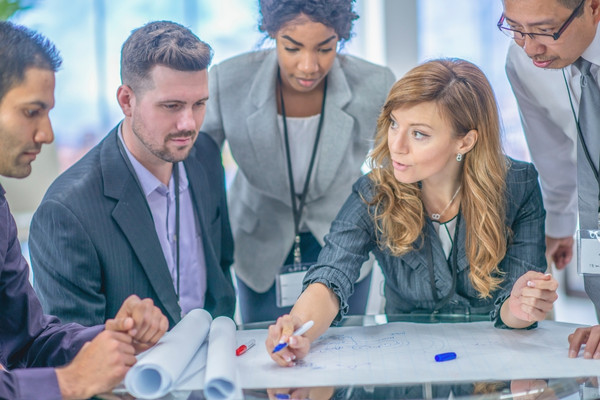
Local Programs: Internally focused work is best spent supporting your leadership team so they can perform at their best. External-facing work is best spent in doing things you do well.
I am getting out of the way to let others lead well and to actually spend time where I can add value. It seems straightforward, but it’s easy to get pulled in and do things where you are not particularly liked, you’re not particularly good at, people don’t necessarily even want you doing it, and somehow you find yourself spending all your days doing these things. I spent a couple of years figuring that one out, and now, I’ve landed in a better place.
“Why is Lauren so grouchy?” That’s one of the things I see with a lot of leaders coming into the top leadership role in their organizations. You come into this role because you’re good at something. In your case, it was programming and policy. In my case, I grew up as a fundraiser, so I was good at it. When you come into these roles, you want to be able to show that you’re good. All of the reward systems that leaders have had when they’ve been in line VPs, or in charge of particular programs, have been about doing what they’ve always done better, at a bigger scale, more of. The work of the executive director or CEO is not like that at all.
It is about being far more selective about where you’re going with your time. It’s like being on a beach full of shells, and your job is to get rid of all the crabs on the beach. Every shell has a crab under it. You can pick up every shell. Everything you see under that shell, you can make it marginally better, but some things you make exceptionally better. Your job is to learn the difference between what you have marginal progress with and what you can make the biggest difference with. It’s hard for leaders.
I don’t take credit for this analysis. It was shared with me, but it resonated deeply, especially in those first years, when I was in that swampy, figuring-out moment of my job. I was told by someone that, without entirely generalizing, they had observed that women executive directors tended to lean into their weaknesses or areas of the job that were less valued and less celebrated. Male leaders tended to lean into their strengths, where they would get recognition and validation.
Women executive directors tend to lean into their weaknesses and less-celebrated areas of their jobs. Male leaders tend to lean into their strengths where they would get recognition and validation. Share on XThat resonated with me. I can share with you. I started this job right at the start of the pandemic. I remember a lot of the work that I ended up doing, and that my fellow women EDs were doing, was around HR. It was our ways of working, our work modalities, and our remote work policy. It’s very HR heavy, which wasn’t glorious, but needed to be done. I remember speaking to peers about this. They were working on that.
I remember at the time getting quite a few calls from male CEOs saying, “I heard you. You did a good work modalities policy. Could you share it with me so I could use it?” I thought, “You’ve been out fundraising and in the media. We’re slogging away at these internal HR policies that are well-needed and that have provided care and benefits for our employees.” At that moment, I saw it. I thought, “Yes, there is definitely a gender dynamic at play here as to what people are self-prioritizing.” I’m not a martyr here. This is how I decided to spend my time, but it was an eye-opener when that gender dynamic was mentioned to me. I thought, “How do we both do what is right, but also what gives us energy, inspiration, and motivation to keep going?”
We had a number of conversations around our group here at The Discovery Group during that early part of the pandemic, as we were supporting clients and organizations that were going through exactly what you described there. I’ll add to the gendered lens of how that was managed. It’s very true post-pandemic. There are a few other crises going on, so I don’t think we’re back to whatever normal used to look like.
The other thing that we saw is that women in leadership roles were more likely to be concerned with supporting their leadership team as a first priority. “I want to help the people around me to be successful.” Male leaders were more likely to say, “I’m going to demonstrate. I’m going to lead by example in what I am best at and encourage other people to come along.” Both can work. There are bad ways to execute both of those strategies, and there are good ways to execute both of those strategies. It was highly gendered.
How organizations came out of the pandemic, the organizations that we worked with and worked very closely with through that, the organizations that focused internally at least as much as externally, recovered far more quickly in their fundraising. Their strategy, their programming, and their retention suffered many fewer issues related to people resigning and loss of staff. The consequences of leading by example as the default were significant and obvious from our view.
We work with about 60 organizations at any one time. We should have done an academic study on it. We had almost enough numbers for it, but it was incredibly gendered. We’ve tried to take that away. Our group is trying to support it. It has to work for you. Realizing that if it works for you, it’s going to work for your team is good advice, as long as there’s an awareness of what your team actually needs. It’s simple.
Oxfam Canada’s International Governance Structure
I want to come back to the work of Oxfam and a little bit about the structure of the organization. It is an International organization known for acting around the world, as you’ve talked a little bit about already. Tell us a little bit about the international governance structure of Oxfam and how that relates to Oxfam Canada.
How many hours do we have for this section? International governance of large organizations is a whole issue on its own. The way Oxfam works is that we are independent organizations that come together more like a network. We’re an affiliated organization, but it’s not a federation. Oxfam Mexico, Oxfam Canada, Oxfam France, and Oxfam Brazil are each independent organizations. Oxfam International is a coordinating body that historically has focused most on our global influencing agenda. For example, making sure that we’re all on the same page when we show up at the World Economic Forum. When we show up at the Committee on the Status of Women at COP, to have shared advocacy messages and agendas.
More and more, Oxfam International is also coordinating our line, managing our project implementation, and humanitarian operations. That’s how we work. We’re coordinated, sometimes joined at the hip, and sometimes more autonomous. It makes for an organization where each part of the organization can have a loud and important voice, but it also means that there are lots of debates. There can be dissension and differing views because we’re not all necessarily held to walking in the same direction.
An example I can give you is many years ago, Oxfam Canada made the decision to focus exclusively on women’s rights issues and gender equality, and said, “We’re a feminist organization. This is going to be all that we do, from policy to the way we program to how we fundraise.” At the time, that was not necessarily the flavor of the day, yet we said, “That’s who we are. That’s what we’re going to do. We’re going to continue to work on the big themes that Oxfam works on, economic justice and food justice, but from a feminist lens.” We had the room to do that because we are part of the family, but an independent member of the family.
It brings a richness to the organization that each Oxfam in its own country has a history and has a rootedness in local civil society. In Canada, we’re very connected to the women’s movement and to gender equality and LGBTQ organizing. If I think of Oxfam Mexico, they are known for their work on fiscal justice and economic policy. You go on that way, for example, Oxfam South Africa, very rooted in farmers’ rights, the work on the farm, and farming conditions.
It allows diversity in areas of work, but with shared values. I would say what ties us together is our influential work to say, “Almost regardless of the theme that you’re working on, we understand that to make change, you have to address the big systemic causes of the issues of injustice, inequality, and poverty that we’re fighting.” That looks different in the Canadian context or in the South African context, but ultimately, we have a shared commitment to that political analysis and acknowledging that we’re part of power struggles and we’re focused on shifting power. We take that role seriously in every country where we work.
It looks different in countries where there’s very little civic space, authoritarian regimes. You might not be putting out the same press release as you can in a country like Canada, but you’re using different ways of influencing. It is more subtle perhaps, and more behind the scenes, but there is always that shared commitment. That’s the glue that ties us together.
The strength of that diversity of expertise and focus helps with that connectedness to what’s happening in communities where you’re working, Oxfam generally, and specifically, each country or organization. We were talking about the pandemic and how there have been a few things that have followed on after the pandemic that have resulted in this policy crisis. How is the state of the world affecting the conversations that you’re having with your board? What are the questions your board members are asking that maybe are new to the conversation?
In a way, the crisis that we’re experiencing globally is something that we’ve seen coming and have been working up to. Maybe, unlike some other organizations, I feel like we were having conversations about this moment years ago, preparing for this. We’re seeing shrinking civic space, more and more threats to civil society, and organizing by human rights defenders. These are things that were very much on our radar.
Also, conversations on how to maintain an independent voice when you’re an organization that sometimes relies on government funding and on donors. How can you speak out, call out the powerful, whether it’s the corporate elite or governments, and also have a sustainable business model that keeps your operations afloat? These are things that are always top of mind.
This is all playing out in real time, obviously. If you look at the United States, to give you an example from there, Oxfam made the very deliberate decision since its founding never to accept money from the US government. We are one of the only international organizations and certainly one of the only humanitarian organizations that has never accepted US government funding. It was explicitly to say, “This is the most powerful country in the world. If we want to be an independent voice and to have an advocacy voice, that will always tie our hands, regardless of the party or the president of the day. That was always viewed as a risk that was not worth taking.”
These are conversations we were already having. Obviously, that seems like a very smart decision, given that the rug has been pulled under the entire system. That doesn’t make anything better for the impacts on the humanitarian system, but it does allow us to continue functioning. On the flip side of that, since we’re one of the organizations that didn’t take that funding, we’re one of the only organizations that can speak out forcefully, and therefore, even more in the spotlight for political attacks.
These are conversations that we’ve been having for years. In the Canadian context, one of the conversations that my team and I are having, and we’re going to be having with our board, to think of what the next five or ten years look like for us, is reflecting on how we can better connect the dots. I say we as Oxfam, but I would also say we as social justice organizations. How do we better connect the dots between equity and equality issues that we’ve been working on, whether it’s on disability rights, women’s rights, LGBTQ communities, Indigenous rights, people’s very real economic concerns, and class struggles, quite frankly?
There has been too much of a disconnect between economic justice, people’s economic concerns, and the other areas of human rights that we’ve been fighting for. We know that all human rights only work if they all go together. We’ve, to our detriment, spoken too little about the economic hardship that people are experiencing. Because of that, the extreme right has taken over that terrain of economic justice in a way and has become the defender of people’s concerns around how you’re going to pay the rent and how you’re going to feed your kids.
All human rights only work if they all go together. Share on XIt somehow pitted that against groups that are seeking equity and justice, indigenous communities, minority communities, immigrants, and refugees. A conversation that we’re going to be having with our staff and our board is how do we, as an organization that has a long track record of working on economic justice and issues of fiscal policy, make the connection between pocketbook concerns that Canadians have, and the range of other justice and human rights issues that we work on?
The policy proposals that we put forward will only make it their way through Parliament and make it their way through legislation, if people care about them. If there’s no groundswell of support, we can be the best advocates ever. It won’t go anywhere. Even if we get a law passed or a piece of policy passed, it won’t stay. An example of that we saw is that in Canada, we do a lot of work on tax justice, saying we can only pay for public services for our healthcare, education, and childcare if we have a fair tax system. The wealthy are not being sufficiently taxed. We do a lot of work on tax justice. We also recognise we need to change the way we talk about these things because if not, we’re not making any headway.
In the last election, you saw how tax was the dirty word. Regardless of the tax, whether it was capital gains, the inclusion rate, or the carbon tax, that was the thing that all politicians were ready to throw under the bus. It was perceived that Canadians didn’t care and didn’t want to have any conversation on taxes. That, to me, is a sign that we’re doing something wrong. If working-class people and people who aren’t struggling don’t see the benefits of redistribution in our fiscal policy to reinvest in public services, then this is on us to better communicate why it’s interconnected, your ability to pay the rent, and calling for the biggest polluters of this world to pay their fair share of taxes, so that the state has the means to reinvest in our communities.
Dealing With Inequality In Philanthropy
On that economic inequality issue, there’s a direct correlation between economic inequality and philanthropy, particularly in Canada. We’ve seen the number of Canadians who file their taxes and say they’ve made a charitable donation continuing to decrease year over year, while the amount of money that is being donated continues to increase year over year. We see that a lot in our client work, where it used to be 80% of the money came from 20% of the donors in a campaign-type environment. Those numbers are closer to 95% or 96% than to 5% or 4%. These large gifts are happening, and they’re great news for the organization.
They do indicate that wealth inequality is showing up in philanthropy in a very tangible way. As an organization that is movement-based, monthly donations and many thousands of people coming together to make smaller donations are a big part of what Oxfam does. How do you think about that inequality when it comes to philanthropy? How does it impact your organization?
Our fundraising model very much reflects the type of organization that Oxfam is and our values. It’s no surprise that most of our public fundraising comes from people who are giving small monthly donations, $20 or $30 a month. We have people who have been supporting us for 30 or 40 years. It is $20 a month over decades. That is the root of our fundraising model. It’s never been in major gifts. We have some generous donations, but it’s more focused on large mass engagement.
In the way that we speak and work with these people, we equally value someone showing up to a rally, signing a petition, or making that $20 a month donation. In times of hardship, we have people who write to us and say, “I have to pause my monthly donation. Can I volunteer? Can I show up within an advocacy action? I still want to be engaged.” We see those as not necessarily interchangeable, but connected, not separating out philanthropy from civic engagement. We see making gifts as a form of activism, and there are many forms of activism.
What we’re focused on is movement building. What has been interesting is that so many young people have started supporting Oxfam and donating to us. We’ve had a surge of young people. A lot of it has been around our advocacy for people in Gaza, and calling out the human rights violations and crimes being committed by Israel in Gaza. Interestingly, these people have come to Oxfam because they wanted to advocate, use their voice, and speak out. They also said, “We want to stay for the long haul. We don’t have much to give, but we want to make that contribution.” That intersection between an advocacy action and a contribution to the mission for us is the sweet spot. That’s where everything makes sense. It all comes together there.
Defending The Things That Matter
You’re best in class in connecting that movement-based activism to philanthropy. You and your team do that exceptionally well. Lauren, as we come to the end of our conversation, what are you looking forward to?
It’s going to be a rocky few months, years, and decades ahead. I have always been an optimistic person in my life. Right now, I have to say it’s harder. The world does look more bleak. Speaking about Gaza, the fact that such crimes can be committed, and that it’s hardly making the evening news anymore, we’re facing such an uphill battle for a system that has been built over 70 years of a human rights system, a rules-based order that is now being questioned. Looking to the future, it’s how we find a way to defend things that have been fought for over generations, international humanitarian law, the very idea of universal human rights, and the idea of gender equality.
If humans can be killed in total impunity, hunger can be used as a weapon of war, and civilians can be targeted with no one saying anything, what will happen to the rest of humanity? Share on XWe’re not even talking necessarily about making progress. We’re saying these things still matter. Let’s not backslide. As an activist, it’s hard to see holding your ground as success, as progress, or as energizing. In a way, that’s where we are. We need to hold our ground on some of these things. People have asked me, “Why has Oxfam put such an emphasis on Gaza when we know people are suffering in so many other parts of the world?” We know they are, and we’re working in those parts of the world.
We’re saying we focused on Gaza because if humanitarian workers can be killed in total impunity, if hunger can be used as a weapon of war, and if civilians can be targeted and no one says anything, then what’s going to happen to the rest of humanity? Our humanity will be hollowed out. For the future, it’s holding the line on core values, core human rights instruments, and norms that collectively we believe in and think make humanity better.
Also, we need to do two things at once. Hold the line, hold our ground, and think about what is a new way to organize in a world that’s so controlled by the ultra-wealthy, oligarchic corporate elites, where democracy is shrinking. We need a new value proposition. We need to find a way to mobilize people in a way that’s energizing. We can’t be just saying we’re against Trump or against this authoritarian tidal wave that’s affecting all communities in the world. We have to offer up new visions of just and sustainable societies.
That’s what most people want. At the end of the day, most people want their communities to be healthy, happy, and safe. We need to be focused on preserving what we’ve had and figuring out new economic, social, and geopolitical models that allow for the grand majority of humanity to live a good life and not to be totally dominated by these mega powers of wealth concentration and political capture that are hurting our planet, hurting our society, and hurting future generations. It is holding ground and also trying to dream up new models for the future.
There is great work to be done, and great work that you and your colleagues are doing every day. Thank you so much for being a part of The Discovery Pod, Lauren.
Thanks. I love this conversation. Thanks for having me.

